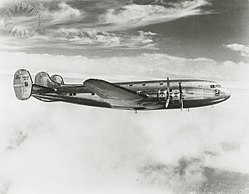| R-2180-A Twin Hornet | |
|---|---|
 | |
| Type | Radial engine |
| National origin | United States |
| Manufacturer | Pratt & Whitney |
| Major applications | Douglas DC-4E |
| Number built | 30 |
| Developed from | Pratt & Whitney R-1690 |
| Developed into | Pratt & Whitney R-2800 Pratt & Whitney R-4360 |
The Pratt & Whitney R-2180-A Twin Hornet was a radial engine developed in the United States by Pratt & Whitney. It had two rows of seven cylinders each.
